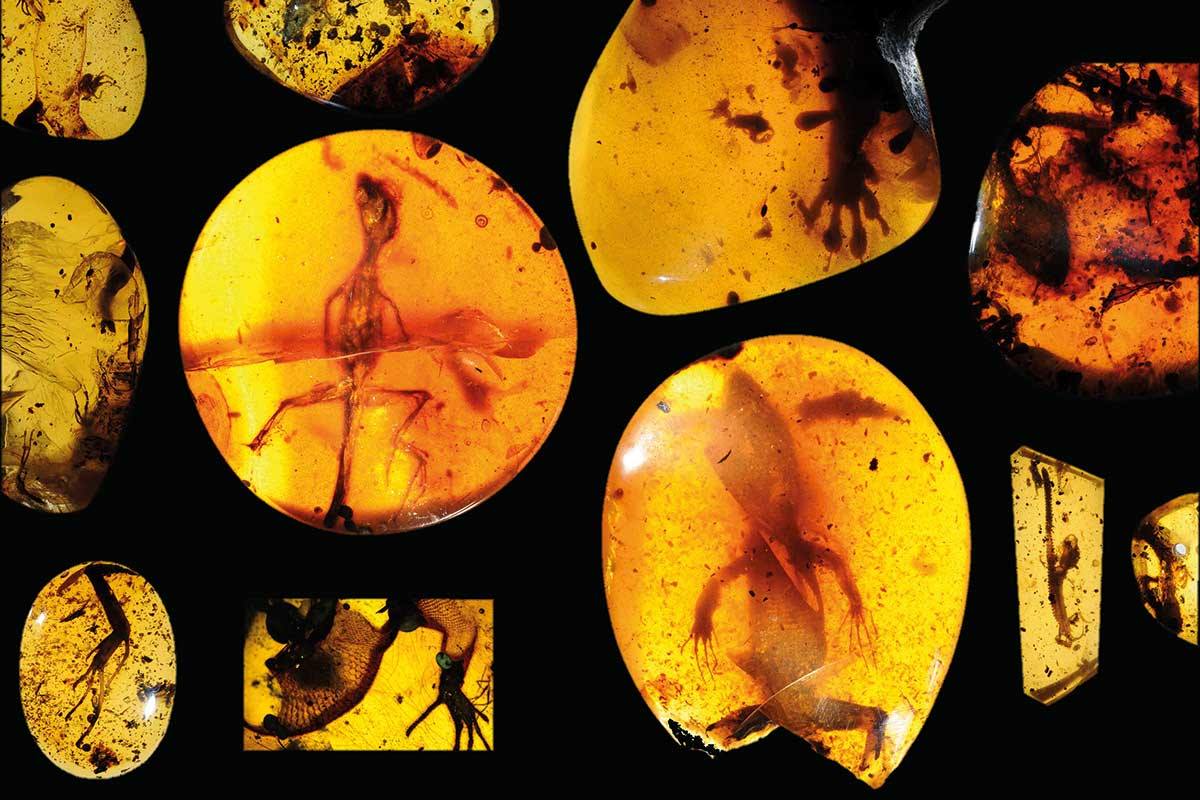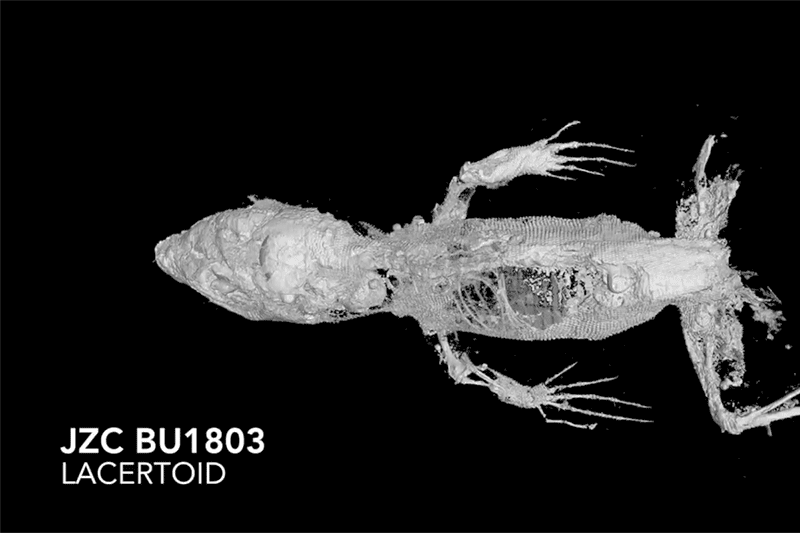https://www.newscientist.com/

Florida Museum of Natural History/Kristen Grace
A new collection of 12 lizards preserved in amber dates back to middle of the Cretaceous period – when dinosaurs such as the massive Argentinosaurus were still around – and may include the ancestors of geckos and chameleons.
The specimens come from Myanmar’s Kachin state and are thought to have lived in tropical forest. Each is embedded in Burmese amber, which previous studies dated to about 100 million years old. Previously, we knew of only a few fragments of amber lizards from the time of the dinosaurs – when modern lizard groups first evolved, according to genetic analyses.
The lizards, discovered in private amber collections on loan to the American Museum of Natural History and Harvard University, are immaculate and unusually diverse. As such they suggest that major lizard groups were already established at that time. The specimens will now go on display at the Houston Museum of Natural Science.

Florida Museum of Natural History/Kristen Grace
Another specimen has its tongue stuck out. With a narrow, extended tip, it matches no snake or lizard tongue ever found.
One small lizard is trapped next to a scorpion-like animal and a millipede. That proximity, plus the fact that modern lizards in tropical forests hunt arthropods, suggest these animals preyed on them, Daza says.
That particular lizard is doubly interesting. Its bone structure resembles that of a newborn chameleon, although it is about four times the age of the oldest chameleon-like fossils previously known.
It even has a weak jaw, which wouldn’t be good for biting prey – possible evidence that the modern chameleon’s method of grabbing prey with a projectile tongue is really an old adaptation, Daza says. The find may also challenge current view that chameleons originated in Africa.
The new specimens are beautiful and very exciting, says Michael Caldwell of the University of Alberta in Edmonton, Canada. “We really have had little to no previous fossil record detailing that part of the family tree of lizards,” he says.
But closer anatomical studies are now needed to determine where each lizard is best classified – especially the putative chameleon, he adds.
Read more: Stunning fossils: The seven most amazing ever found

No comments:
Post a Comment